Category: Veterinary
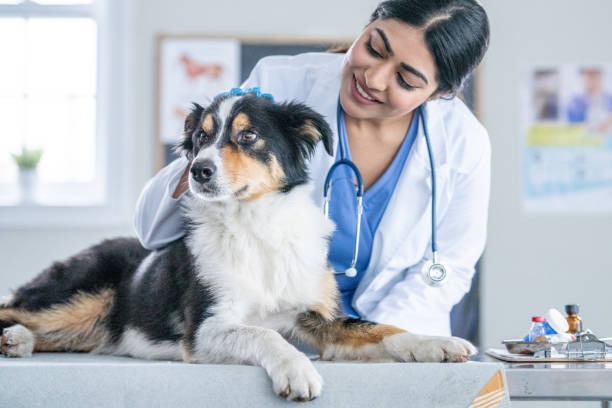
Finding the right pet surgeon can feel daunting, especially when your furry friend needs specialized care. But worry not—this article will guide you through what to consider, making the process much smoother and less stressful. Let’s look into the key factors that will help you make an informed decision.
1. Understanding Your Pet’s Surgical Needs
Before you start your search, it’s essential to understand your pet’s specific needs. Different surgeries require different skill sets. Is it a routine procedure, or does it involve complex orthopedic or neurological aspects? Knowing the type of surgery will help you narrow down the most suitable options.
Consulting with Your Veterinarian
Your primary veterinarian is a great resource and should be your first point of consultation. Based on their knowledge of your pet’s medical history, they can offer valuable insights and recommendations. Discussing the nature of the surgery and possible specialists will set a solid foundation for your search.
2. Research and Recommendations
Gathering recommendations and researching are crucial steps in your search for a pet surgeon. Here’s what you can do:
-
Ask friends and family for their experiences with local pet surgeons.
-
Check online reviews and testimonials for nearby clinics.
-
Join online pet forums or social media groups for personal stories and advice.
Looking for Accreditation
Accreditation by reputable veterinary associations is an excellent indicator of a surgeon’s expertise. This credential assures that the surgeon has met high standards in veterinary medicine.
3. Evaluating Experience and Expertise
A pet surgeon’s experience can significantly impact the success of your pet’s surgery. Here’s how to evaluate a surgeon’s experience:
Years in Practice
While newer surgeons might offer fresh perspectives, experienced surgeons often bring tried-and-tested techniques to the table. Consider surgeons who have been practicing for several years in the specific type of surgery your pet needs.
Specialty Certifications
Some pet surgeons go beyond general practice to seek additional certifications. These credentials can be a testament to their dedication and expertise in certain procedures.
4. Facilities and Technology
Modern facilities equipped with the latest technology can offer advanced treatment options and better outcomes. When visiting or researching a clinic, take note of the following:
-
The quality and upkeep of the facility.
-
Availability of advanced diagnostic and surgical equipment.
-
Post-operative care facilities, including a comfortable recovery area for pets.
5. Location and Accessibility
Consider the location of the surgeon’s clinic. Is it conveniently located, or would it require a long journey? Proximity can be crucial, especially in emergencies. Search for an “animal hospital near me” to find easily accessible options.
6. Cost and Payment Options
Surgical procedures can be costly, so it’s important to understand the financial aspects beforehand. Here’s what to evaluate:
Requesting an Estimate
Request a detailed estimate for the surgery, including pre-operative and post-operative care costs. This transparency will help you budget effectively.
Payment Plans
Check if the clinic offers payment plans or if they accept pet insurance. These options can make expensive procedures more manageable.
7. Understanding Your Responsibilities
Being a pet owner entails responsibilities that extend beyond choosing the right surgeon. Here’s how you can ensure the best care for your pet:
Pre-operative Preparations
Follow all guidelines provided by the vet for pre-surgery preparations. This might include dietary restrictions or health checks.
Post-operative Care
Adhering to recovery plans after surgery is crucial. To facilitate a smooth recovery, ensure you understand all instructions, from medication schedules to activity restrictions.
8. Building a Relationship with the Surgeon
Feeling comfortable with your pet’s surgeon is essential. Building a rapport can lead to better communication and trust. Don’t hesitate to ask questions or express concerns; a good surgeon will welcome and address them.
Follow-up Appointments
Regular follow-up appointments are vital for monitoring recovery. Choose a surgeon who emphasizes continuous care and regular check-ups.
9. Emergency Preparedness
It’s always wise to be prepared for emergencies. Know the emergency protocols and have contact information readily available. Consider searching for a veterinary emergency clinic that can assist outside regular office hours.
10. Your Decision Matters
Trust your instincts when making the final decision. Ensure you feel confident in your choice, as it can tremendously affect your pet’s health and happiness. If proximity is important to you, look for a pet surgeon in Halifax or similar local specialists.
11. Checking for Communication Skills
Clear communication with your pet’s surgeon is essential for understanding the procedure and care your pet will receive. Here’s what to look for:
-
Open Dialogue: Ensure the surgeon is willing to discuss all aspects of the surgery and address your questions thoroughly.
-
Patient Explanations: A good surgeon will explain medical terms in understandable language, ensuring you’re fully informed about your pet’s condition and treatment.
-
Availability: Consider how easy it is to reach the surgeon or clinic staff. Timely communication can make a significant difference in how smoothly the process goes.
Final Thoughts
Choosing the right pet surgeon is a crucial decision that requires time and thoughtful consideration. By following these guidelines, you’re well on your way to finding the best care for your beloved pet. Remember, a good decision today will lead to happier tomorrows with your furry friend.
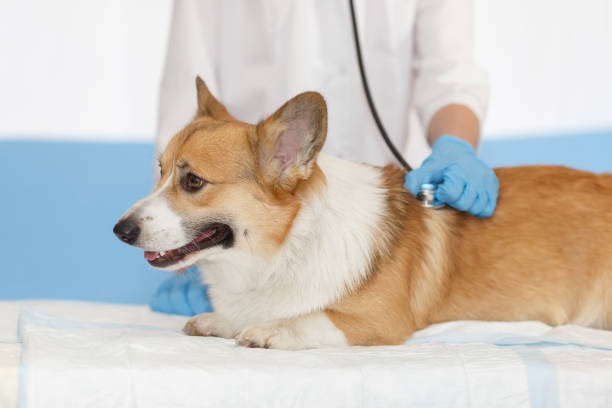
Cold laser therapy, also known as low-level laser therapy (LLLT), is becoming increasingly popular in the veterinary world. As pet owners, we are always searching for ways to give our furry friends the best possible care. Cold laser therapy is a noninvasive, painless treatment that can help manage various conditions, ensuring our pets stay healthy and happy. Let’s explore the benefits of cold laser therapy for your pet.
What is Cold Laser Therapy?
Cold laser therapy uses low-intensity light to stimulate healing in the body. Unlike surgical lasers, which cut and burn tissue, cold lasers penetrate the skin without causing damage. The therapy works by enhancing cell function, reducing inflammation, and promoting blood flow, among other benefits. If you’re considering this treatment for your pet, Miller Clark Animal Hospital laser treatment for pets ensures effective and gentle care.
Benefits of Cold Laser Therapy for Your Pet
Cold laser therapy offers a range of benefits that can improve your pet’s overall health. Here are some key advantages:
-
Pain Relief: The therapy reduces pain by promoting the release of endorphins and enhancing blood flow, which aids in healing and reduces inflammation.
-
Reduced Inflammation: Cold laser therapy helps manage inflammation, making it useful for conditions like arthritis, injuries, and post-surgical recovery.
-
Improved Mobility: Post-therapy, pets with joint or muscle issues can experience improved mobility and a better quality of life.
-
Accelerated Healing: The treatment speeds up the healing process for wounds, cuts, and surgical incisions.
-
Noninvasive: Unlike other treatments, cold laser therapy is noninvasive, making it a low-risk option for pets of all ages.
Conditions Treated with Cold Laser Therapy
This versatile treatment can address a multitude of conditions. Here are some examples:
1. Arthritis
Arthritis is a common condition, particularly in older pets. It can cause significant pain and reduce mobility. Cold laser therapy helps by reducing inflammation and promoting joint health, which can ease discomfort and improve your pet’s mobility.
2. Soft Tissue Injuries
Pets can suffer from various soft tissue injuries, including sprains and strains. Cold laser therapy aids in the healing process and reduces pain, ensuring a faster recovery.
3. Post-Surgical Healing
After surgery, pets need time to heal, and the recovery can sometimes be painful. Cold laser therapy accelerates the healing process and reduces post-operative pain, making the healing period more comfortable for your pet.
4. Skin Conditions
Cold laser therapy can also be effective in treating different skin conditions, such as hot spots, dermatitis, and chronic wounds. The treatment promotes skin regeneration and reduces inflammation, leading to healthier skin.
5. Dental Issues
Oral health is vital for pets’ well-being; untreated dental issues can cause significant discomfort. Cold laser therapy helps manage these by reducing inflammation, promoting tissue regeneration, and alleviating pain. It aids recovery and maintains oral health, thus preventing future problems. For comprehensive pet dental care in Mamaroneck, NY, it’s important to address these concerns with regular check-ups and treatments.
What to Expect During a Cold Laser Therapy Session
If you’re considering cold laser therapy for your pet, you might wonder what a typical session looks like. Here’s a brief overview:
-
Consultation: First, consult your veterinarian to discuss whether cold laser therapy is right for your pet. They will evaluate your pet’s overall health and specific condition to determine the best treatment plan.
-
Session Duration: Each session typically lasts around 10 to 30 minutes, depending on the area being treated and the severity of the condition.
-
Gentle Treatment: The therapy is painless and noninvasive. Your pet will likely feel a slight warmth in the treated area but no discomfort.
-
Multiple Sessions: Multiple sessions might be needed to achieve the best results. Your vet will develop a treatment schedule tailored to your pet’s needs.
Choosing the Right Veterinary Clinic
Not all veterinary clinics offer cold laser therapy, so it’s essential to find one that provides this innovative treatment. When choosing a clinic, consider factors such as the staff’s expertise, available equipment, and the clinic’s reputation. A veterinary internal medicine specialist can guide you on whether cold laser therapy is suitable for your pet.
Complementary Treatments
While cold laser therapy offers numerous benefits, combining it with other treatments can enhance its effectiveness. Here are some complementary treatments:
-
Physical Therapy: Combining cold laser therapy with physical therapy can improve mobility and strength, particularly for pets with joint or muscle issues.
-
Nutritional Supplements: Supplements like glucosamine and chondroitin can support joint health, working in tandem with the therapy.
-
Pain Medication: While cold laser therapy is effective in reducing pain, some pets may still need medication for complete pain management.
Cost and Accessibility
The cost of cold laser therapy can vary depending on the number of sessions required and the veterinary clinic. Although it may represent an additional expense, the benefits to your pet’s health and quality of life are well worth the investment. Be sure to discuss the expected costs with your veterinarian to plan accordingly.
Final Thoughts
Cold laser therapy is an exciting and innovative treatment that offers numerous benefits for pets. From pain relief and reduced inflammation to accelerated healing and improved mobility, this noninvasive therapy can significantly enhance your pet’s quality of life. If you think cold laser therapy could be beneficial for your pet, consult with your veterinarian to discuss whether it’s the right option. Keeping our pets healthy and happy is a top priority, and cold laser therapy is a powerful tool in achieving that goal.
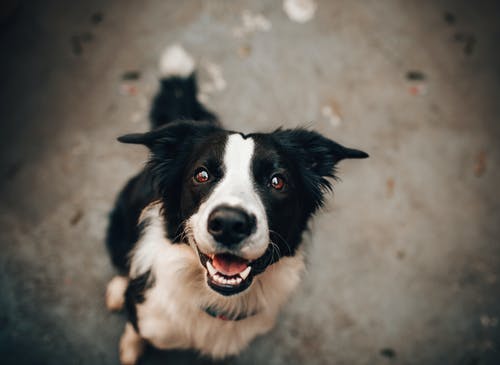
Pets are members of our families, and their health is just as critical as ours. As pet parents, it’s our responsibility to ensure they maintain optimal health. Spotting the symptoms of illness at the earliest can be a lifesaver.
This article will guide you to understand the common symptoms better and help you identify signs your pet may display when in poor health. So, arm yourself with this knowledge to provide the best care possible for your loved ones.
Understanding Pet Health: An Introduction
Just like people, pets also suffer from a variety of health issues. Understanding the importance of pet health and how to identify signs of sick pets can be vital for their well-being. Determining good health in pets is not always straightforward; it takes a keen eye to spot subtler symptoms of pet health problems.
Warning Signs Early Indicators of Pet Illness
Being aware of the early indicators of pet illnesses is critical in ensuring your pet’s health. A few warning signs you should be cautious of include:
- Changes in Eating Habits: Variations in your pet’s appetite or sudden lack of interest in food can be a tell-tale sign of an underlying health issue.
- Alterations in Behavior: Is your usually playful pet now lethargic and inactive? Significant changes in your pet’s behavior may highlight potential health concerns.
- Lethargy: An unusual lack of energy or constant tiredness in your pet can suggest the onset of an illness.
These signs warrant immediate attention; it might be best to schedule a vet check-up promptly.
Specific Symptoms Related to Pet’s Poor Health
When your pet is not at its best, you might notice changes in behavior and activity levels, which can manifest in several ways:
- Behavior and activity level shifts: If your pet appears lethargic or unusually inactive, it may indicate underlying health issues.
- Dental care: Poor oral health can impact overall well-being. Problems can range from bad breath to serious gum disease. Utilize this link for in-depth information.
- Digestive issues: Persistent diarrhea, vomiting, or constipation could indicate digestive problems in your pet.
- Mobility troubles: Difficulty standing, sitting, or walking can suggest musculoskeletal problems.
- Changes in urination: Altered urination habits may signal urinary or kidney concerns.
Turn to veterinary care for a professional diagnosis when noticing these changes.
Assessing Physical Changes in Your Pet
Understanding your pet’s normal physical state is essential in spotting potential health issues. These physical changes are tangible signs that could indicate underlying medical concerns:
- Visible Injuries: Scratches, wounds, or abrasions could signal external harm or internal issues like infections.
- Skin abnormalities: Excessive scratching, redness, or a foul smell may indicate skin allergies or infections.
- Unusual Discharge: Watch out for unexpected discharge from your pet’s eyes, nose, or ears; they could suggest various ailments, from allergies to infections.
- Swellings or Lumps: Unexplained swellings or growths on any body part shouldn’t be ignored. They may signify a multitude of health issues, some serious.
Observing these physical changes in your pet can help you identify problems early and seek timely veterinary care for a faster recovery.
Respiratory Concerns in Pets
Just like their human counterparts, pets can also suffer from respiratory issues. Pets with respiratory problems may show symptoms like coughing or sneezing and should be consulted with a vet if such signs persist. Animal surgery, which falls under veterinary surgery, might be recommended for severe cases. If the vet suggests this option, remember it’s essential for your pet’s recovery.
Why Regular Vet Check-ups are Vital for Your Pet’s Health
Regular vet check-ups are crucial for your pet’s well-being.
Here are a few reasons why:
- Early detection: Regular check-ups can help identify potential health problems before they escalate. This makes treatment more manageable and effective.
- Preventive care: Discussions with your vet during check-ups can guide you on necessary preventative measures to guard your pet against common health issues.
- Vaccinations and parasite prevention: Routine cat and dog vaccinations are essential. Vaccinations can protect your pet from various diseases, and routine parasite prevention keeps harmful parasites at bay.
Remember, a healthy pet is happy, and regular vet check-ups are key.
When Should You Consult Your Vet?
No one knows your pet better than you. Always trust your instincts when it comes to your pet’s health issues. If you notice any persistent abnormal behavior or physical changes, it’s usually a good idea to consult your vet. Watch for severe symptoms, try to understand your pet’s behavior, and communicate effectively with your vet for the best care.
Conclusion
Your pet’s health should never be a guessing game. With routine observation and regular veterinary care, you can ensure your pet’s healthier, happier life. Caring for your pet’s health involves a combination of regular pet care, staying updated with vaccinations and regular check-ups, and being sensitive to the signs of health issues.
Remember, you and your pet are on this journey together, and your pet’s health is in your hands. To ensure your pet’s long and fulfilling life, be the best pet parent you can be, and the rewards will be immeasurable.

As a pet owner, deciding whether to spay or neuter your pet can be difficult. On the one hand, spaying and neutering can prevent unwanted litter and provide health benefits, but there are possible risks and downsides to consider. In this article, we’ll explore the benefits and risks of spaying and neutering your pet and help you make an informed decision.
What are Spaying and Neutering?
Let’s start by explaining what spaying and neutering are. When a female pet is spayed, the reproductive parts are surgically removed. When a pet is neutered, its testicles are surgically removed.
Benefits of Spaying and Neutering
One of the main benefits of spaying and neutering your pet is preventing unwanted litters. In addition to preventing unwanted puppies or kittens, spaying and neutering can lessen the number of animals in shelters and decrease the number of animals euthanized yearly.
Another benefit of spaying and neutering is the potential health benefits for your pet. Spaying a female pet can reduce the risk of specific types of cancer, such as ovarian and uterine cancer, and prevent uterine infections. Neutering a male pet can also lessens the risk of specific types of cancer, like testicular cancer, and decrease the risk of prostate problems.
Finally, spaying and neutering can also reduce unwanted behaviors, such as marking and roaming. Male pets may be less likely to wander off searching for a mate, and female pets may be less likely to display aggression during their heat cycles.
Risks of Spaying and Neutering
While there are many benefits to spaying and neutering your pet, there are also potential risks and downsides. One risk of spaying and neutering is the potential for complications during the surgery, such as infection or bleeding. However, these risks are somewhat low and can be minimized by selecting a skilled and experienced veterinarian.
Another potential downside of spaying and neutering is the possibility of weight gain. Neutered pets may have a slower metabolism, making them more prone to weight gain if they continue to eat the same food as before. However, this can be managed with proper diet and exercise.
Finally, some pet owners may be concerned about the potential impact of pet surgery like spaying and neutering on their pet’s behavior. While it is true that some pets may experience changes in behavior after being spayed or neutered, these changes are typically minor. They can be managed with proper training and socialization.
Making the Decision
When deciding to spay or neuter your pet, it is a personal option that should be based on your circumstances and needs. Suppose you decide to spay or neuter your pet. In that case, choosing a skilled and experienced veterinarian who can perform the best possible care during and after the surgery is essential.
In general, spaying or neutering your pet when they are young is recommended, typically between 6 and 12 months of age. This is because younger pets tend to have fewer complications during the surgery and may experience fewer behavior changes afterward.
Conclusion
Spaying and neutering your pet can have many benefits, including preventing unwanted litters, reducing the risk of specific health problems, and reducing unwanted behaviors. But there are also possible risks and bad things to think about. In the end, whether you spay or neuter your pet should depend on your situation and needs, and you should talk to a skilled and experienced vet about it.

Just like humans, pets require regular dental care to maintain healthy teeth and gums. Veterinary dentistry is a specialized field that focuses on diagnosing, preventing, and treating oral conditions in animals. By prioritizing dental care for your pet, you can help prevent dental diseases and promote their overall health and longevity.
How to Help Your Pet Prepare
Taking your pet to the vet for regular check-ups and dental care is important for their health and well-being. But many pets get nervous or stressed out when they go to the vet, which visits hard for you and your pet. Here are some of the best ways to get your pet ready for their check-ups and dental appointments at the vet in Danbury, CT. Always consult your veterinarian for more information.
1. Get Your Pet Used To The Vet Clinic.
Bring your pet to the vet’s office before their appointment so they can get used to the place. This can help them feel less nervous and more at ease when they go back for their check-up or dental work. You can also ask the staff at the clinic for advice on how to make your pet more comfortable during their visit.
2. Practice Calming Techniques
You can use various techniques to help your pet feel more at ease at the vet or the dentist. For example, try using a calming pheromone spray before and during the visit, like Adaptil for dogs or Feliway for cats. You can also bring your pet’s favorite toy or blanket with you to the appointment. This may help them feel better.
3. Choose a Vet Clinic with a Fear-Free Approach
Some vet clinics, like Noah’s Ark Animal Hospital in Danbury, CT, treat pets without making them afraid. This means that they put your pet’s emotional well-being first during the visit. They handle your pet gently and try to reduce stress as much as possible. By choosing a clinic that focuses on making your pet feel good, you can help make sure that their regular check-ups and dental care are as stress-free as possible.
4. Set Up Meetings During Quiet Times.
When making an appointment for your pet, ask the clinic staff about quieter times of the day or week when there may be fewer other pets in the waiting room. This can help calm your pet down during their visit by reducing the amount of noise and activity around them.
5. Try To Keep A Regular Schedule.
By making regular appointments for your pet’s regular check-ups and dental care, you can help them become more used to the process. The more they know about what will happen, the less anxious they may be when they go back.
6. Give Your Pet A Treat.
After the vet visit, give your pet praise, treats, or time to play.
Beyond the apparent benefits to oral health, veterinary dentistry also has far-reaching implications for your pet’s overall well-being. Dental diseases can lead to bacterial infections that may spread to vital organs, affecting the heart, liver, and kidneys. Addressing dental issues promptly can help prevent such systemic health problems and ensure your pet’s vitality and longevity.
Conclusion
By using these tips and tricks and working closely with your vet clinic in Danbury, CT, you can help make your pet’s regular check-ups, and dental care visits more pleasant for both of you. Putting your pet’s emotional health first and keeping them on a regular schedule can go a long way toward making sure they are happy and healthy for the rest of their lives.

Dogs are supposed to be pets that offer good time and companionship. They should relieve stress and help you loosen up after an exhausting day. However, sometimes they’re not acting the way they should. As their pet parents, we know our dogs better than anyone else. Even if our pets can’t verbally communicate their feelings, our instincts tell us when they’re not acting.
If your pet used to be well-mannered and suddenly shows behavioral problems, there has to be a cause. Today, we’ll find out the few reasons pets develop unwanted behaviors to help you proactively address particular traits you do not want in your pet.
5 Culprits of Behavioral Changes in Dogs
Exploring, digging, barking, chewing, and many more behaviors can occur in dogs, which can be an inevitable part of pet ownership. Recognizing the causes of these behaviors can help you act on areas of their life that need attention. So below are five reasons for unwanted canine behaviors you should be aware of.
1. Lack of Exercise
Dogs need physical exercise to burn excess energy, but sometimes on-leash walks around the neighborhood are insufficient. Activities like jogging, running, off-leash runs, fetch games, dog-to-dog play, or dog daycare for socially-active dogs are exercise choices worth considering. If you want to bring your four-legged companion to a pet daycare or dog park to socialize with their fellows, ensure they’re fully vaccinated by your vet.
This helps secure your pet from any prevalent pet diseases they might encounter outside. If you’re looking for a vet facility to have your pet vaccinated, you may search the web for “pet vaccination near me” to see specific results.
2. Boredom or Social Isolation
Dogs that do not get opportunities to socialize with their owners and fellows, or don’t have toys or playmates in their environment, might engage in activities that can result in destructive behavior like excessive chewing. Unfortunately, excessive chewing can put them at risk of major dental problems and accidentally swallowing foreign objects.
If the worst comes to worst, you’ll have to take your pet to a veterinary surgeon should these problems occur. You may click here to see the common pet conditions that require surgical attention.
3. Changes in Diet
Switching your pet’s diet to a cheaper, poorer, or less suitable diet can cause them to act up. You might not think of it, but diet can influence your canine’s behavior. Changing your pet’s diet to a poorer quality or something that doesn’t agree with their taste can change how your pet behaves. Always feed your dog a healthy and high-quality diet, and avoid changing their diet frequently. If you’re unsure what to feed your furry buddy, always ask your vet for the best choices.
4. Illness
Behavioral changes or failure to adapt or show normal behavior may stem from health conditions. The dog may bark unnecessarily or may not bark at all. They might also be lethargic for too long or feel irritable and itchy. Limping, disinterest in foods or lack of behavior synonymous with normal dogs might indicate sickness. If you see any of these suspicious signs in your pet, take them to the vet for a dog checkup.
This is why veterinarians encourage consistency in regular vet examinations to prevent, detect, and treat any underlying health conditions before they aggravate and become serious for your pet.
5. Fears and Phobias
Fearful reactions to loud noises, fireworks, or thunderstorms usually involve escape attempts that result in destructive habits. When this happens, door frames, doors, walls, window trim, and screens often get damaged. This problem can be dangerous as excessively fearful canines can injure themselves when attempting to break through doors or windows to escape from the feared situation. Certain approaches like staying by their side, gently comforting them, and helping your pet feel safe are simple ways to overcome phobias and fears in pets.
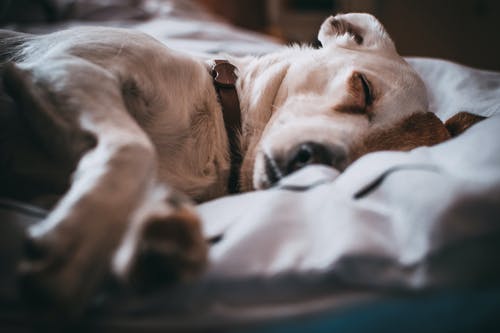
Many eye disorders are common in pets, which can lead to redness, excessive tearing, and discomfort. Your pet’s cornea or other ocular structures could be harmed if the underlying cause isn’t detected and treated quickly. Squinting, tearing, irritation or pain in the eyes are signs of one of the following prevalent eye disorders in pets.
Conjunctivitis
Conjunctivitis, also called “pink eye” is an infection that causes swelling, redness, and a sticky discharge from the eye. The mucus membranes inside your pet’s eyes are called the conjunctiva, and they are hidden on both sides of the eye. When these membranes are exposed to natural forces, they are easily infected. Pink eye is a reaction caused by various factors, like:
- A bacterial or viral infection
- Allergy
- Dirt that gets into the eye
A simple clean and sterile eye wash is normally required to eliminate the symptoms when there is a foreign object or an allergy. On the other hand, bacterial and viral infections need prescription antibiotics that a veterinarian or an ophthalmologist from vet clinics like Harbor Animal Hospital can only give. Vaccinating your pet against infectious ailments such as feline herpesvirus or canine adenovirus can also protect them from conjunctivitis.
Corneal Wounds
The cornea is a clear, skin-like tissue that covers the eye’s surface area and can be easily harmed. Injury, poor tear production, or abnormal ocular anatomy can cause corneal ulcers and other wounds, and the affected eye can be red, swollen, and excessively draining. Your pet will rub or squint the affected eye in pain. Treatments for this problem include:
- Using antibiotic eye drops or ointments to eliminate or cure infections
- Managing pain with pain medications like atropine
- Giving the cornea time to heal
In extreme cases, the cornea may require surgical intervention or other advanced treatments to protect or address it and speed up the healing recovery. Some pet vaccinations, such as the one for canine or feline distemper, can also aid in the prevention of corneal ulcers by improving your pet’s immune system.
Glaucoma
When fluid production in the eye becomes unbalanced, pressure builds up, causing glaucoma, a condition commonly seen in pet dogs. These are some of the symptoms:
- Redness
- Swelling
- Excessive tears
- Dilated pupils
- Bulging eyes
- A cloudy look in the eyes
Glaucoma can permanently damage the optic nerve if left untreated. While medicines can help, veterinary surgery performed by an ophthalmologist is normally the most reliable solution for minimizing the disease’s potential damage.
Cherry Eye
The cherry eye is one of the most prevalent ocular conditions in animals. While human beings have two eyelids, dogs and cats have three. The inner corner of the eye is the location of the third, usually concealed eyelid. In some pets, the eyelid ligaments that hold the gland that produces tears in place become weak.
When these ligaments become loose, the gland bulges of its position, resembling a red cherry stuck in the corner of the eye. To permanently treat this issue, you must take your pet to the vet clinic for surgery to make a deeper pocket where the gland can sit.
Conclusion
While you can’t always avoid an eye issue, there are measures you can take to keep your pet’s eyes in a healthy condition and free of injury. Bring them to your vet regularly for wellness care, get them vaccinated, and keep their nails short so they don’t hurt themselves by scratching.
You can also keep the hair around their eyes short and carefully clean their eyes when they’re taking a bath. Whatever eye condition your pet may be experiencing, seek advice from your veterinarian if you have any queries or concerns about your pet’s eye health.
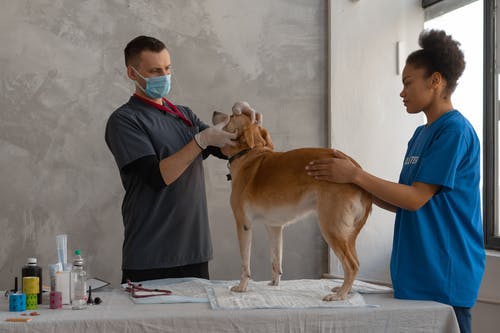
Pets are precious members of our families, so we want to ensure they get the best treatment possible. When boarding our pets, we often consider their safety, comfort, and wellness. However, one element of pet treatment typically overlooked is dental health.
Oral troubles in pets are typical and can result in discomfort, infection, and systemic conditions. As a result, boarding facilities need to prioritize preventative oral looking after their furry visitors.
Why Is Preventative Dental Care Important?
Preventative dental care is necessary for all pets; however essential for boarding pets. Cat boarding Orlando can be a demanding environment for pets, exacerbating existing oral problems or making them most likely to happen. This is particularly true for pets prone to anxiety or stress-related behaviors, such as eating things that can damage their teeth.
Dental problems in pets can go undetected for a long time because pets are experts at hiding their discomfort. As a result, routine teeth cleanings and check-ups are essential in identifying dental problems early before they become much more severe.
Preventative dental care can also considerably influence pets’ total health and well-being. Pain, infection, and even systemic diseases like kidney, liver, and heart can result from oral concerns. Boarding centers can aid in making sure that pets remain healthy and balanced, cozy, and satisfied while promoting good oral health and caring for any dental problems right away.
You can check websites like For more information.
Finest Practices for Preventive Dental Care in Boarding Facilities
There are numerous best techniques that boarding centers can carry out to provide the most effective dental take care for their furry guests:
- Educating Personnel to Recognize Dental Issues: The boarding facility team should get training on recognizing the indicators of dental problems in pets, including bad breath, swollen or bleeding gums, loosened or broken teeth, and difficulty eating or chewing.
- Providing Proper Dental Health Equipment and Materials: Boarding facilities must provide proper dental health devices and materials to pet owners, consisting of toothbrushes, toothpaste, and dental chews. This will encourage pet owners to preserve good oral hygiene for their pets while they are boarding.
- Routine Teeth Cleanings: Boarding facilities should provide regular teeth cleanings for pets through their in-house vet facility or by partnering with a local veterinarian. Routine cleanings will assist in removing plaque and tartar build-up, which can result in oral issues.
- Checking for Dental Issues: Boarding facility staff should monitor pets for any indications of oral problems and, without delay, report any issues to the pet owner and veterinarian.
Influence of Preventative Dental Treatment on Pets’ Health and Well-Being
By focusing on preventive dental look after boarded pets, boarding centers can considerably affect their furry guests’ general health and wellness. Regular teeth cleanings and examinations can find any dental issues early on before they get worse. This can lower the possibility of discomfort, infection, and systemic ailments, ultimately enhancing the pet’s quality of life.
Likewise, maintaining excellent oral hygiene can assist pets in feeling less stressed out and anxious, enhancing the high quality and comfort of their boarding experience. Boarding centers can motivate pet owners to exercise good dental hygiene while away from home by providing the necessary dental health tools and supplies.
You should find a reputable hospital for pets that will ensure your pet receives proper dental care and attention, reducing the risk of dental problems and related health issues. Additionally, regular visits to the veterinarian can help detect and treat any dental issues early on.
Conclusion
Preventative oral care is a vital component of caring for boarding pets. By promoting good oral hygiene and dealing with dental problems immediately, boarding centers can ensure that pets stay healthy, comfortable, and satisfied.

Photobiomodulation, often known as laser therapy, utilizes particular wavelengths of light to create therapeutic effects. Some benefits are decreasing pain, increasing circulation, reducing inflammation, and decreasing swelling. Doctors, physiotherapists, and nurses often use laser therapy because of its benefits. Vets are also using it now because of its numerous advantages, such as relaxation.
Why Is Laser Treatment a Good Option?
Here are several benefits of laser therapy for your pet:
No Pain and Little to No Adverse Effects
The treatment is minimal and, in some cases, no discomfort. At times, patients might feel a pleasant tingling or warmth. The affected area(s) may be most sensitive until the pain disappears. Laser therapy could be peaceful, and the laser beam doesn’t need any pressure or an abnormal position of the animal to conduct its job. Additionally, the laser beam won’t cause discomfort; however, most animals will feel a little heat, which lasts for a short time.
However, it’s known that it has little or no adverse effects, just like laser treatment for human beings. For over twenty years of widespread use by medical professionals, significantly few adverse events were observed. However, it is essential to note that healing reactions are more active following treatment, meaning persistent pain or previous injuries can be felt more severe for several days.
Non-Invasive
Contrary to other treatment methods, such as surgery which can be very harmful to the body, this treatment is relatively easy. Your dog or cat can lie down or sit comfortably while one of the veterinarians or nurses guides the laser beam in the correct location.
Faster Recovery
The therapy is offered to dogs and cats who have had surgery. Because the laser boosts healing, the surgical wound will heal more quickly and effectively. It may also improve the functionality of tendons as well as ligaments.
Relieves Pain
Laser therapy uses focused radiations of light (red and infrared) targeted at a specific body area to activate cells and create a therapeutic effect. The concept behind this therapy is to use less medication. Experts from South Lebanon veterinarians offers these kind of services for regular house pets and exotic animals, which offers the same benefits.
Pet Support
If your pet is nervous at the vet’s office, sitting in the same area while they undergo treatment could aid in their relaxation. Laser therapy is an excellent option if no risk factors are present, like the presence of a pacemaker, pregnancy, or suspicion of Neoplasia. To protect yourself, ensure that you wear safety eyewear.
Skin Disease Treatment
The treatment can effectively treat the skin ailments that the ear can cause, gingivitis in the mouth, and skin pyoderma. It helps to reduce inflammation and associated discomfort. Pet dentistry practices close monitoring due to complications it can cause that can lead to surgery.
Strain Treatment
Laser therapy can treat muscles, tendons, and ligament strains since it relaxes muscles and reduces inflammation. This is especially effective for acute injuries because it reduces the pain and speeds recovery. These conditions typically necessitate only one or two laser treatments.
Bone Disorder Treatment
Laser therapy can alleviate inflammation and pain caused by these chronic illnesses. After multiple laser therapy sessions, many dogs who could barely walk before treatment can walk and move much better. As a pet proprietor, watching their overall health improves and their medicine list decreases drastically is a joy.
Conclusion
Laser therapy on cats and dogs has not been linked to any dangers or adverse effects currently recognized. It is considered safe and safe for all in veterinary medicine. Laser therapy has been used successfully for human patients in a medical environment for nearly 50 years. While it’s still a relatively new concept in vet medicine, it has shown promising results, and many pets benefit from the effects.

A dog’s nails are an integral part of its overall grooming, so keeping an eye on them every time is crucial. It’s normal to be anxious about clipping your pet’s nails, particularly if you’ve had a bad experience in the past. Nonetheless, your cat or dog may deal with severe health problems without regular nail trimming.
Why Should You Trim Your Pet’s Nails?
You may be surprised to learn that routinely trimming your pet’s nails is necessary for their health and well-being. Several benefits of regular nail grooming for pets are improved mobility, reduced discomfort, stronger bonds, and better health. All of these fantastic advantages make this process worth trying.
Nail trimming may feel like a daunting job because most pets dislike it and will typically show their displeasure to their owners. Even so, these are the main reasons for giving your pet a nail trim.
It Can Cause Mobility Issues
Older dogs often have nails that have grown to be exceptionally long, to the point where they restrain their ability to walk. Nails must be trimmed regularly because they can hinder traction and make it much more difficult for elderly dogs with arthritis or other orthopedic problems to get around.
Long nails can impact how a dog’s foot rests on the ground, leading to pain and possibly arthritis if left untreated. Vet clinics providing pet nail trimming services are the suitable choice if you’re having a problem trimming your dog’s nails alone. If you want to book an appointment with them, click here.
It Can Damage Their Paw Pads
Nails, particularly dewclaws or “thumbs,” have a tendency to curl inward and grow into the pad if they are allowed to get too long. The tough skin over the pads is punctured by the pointed edge of the nail, creating an open, ulcerated injury that is often infected and creates severe swelling, pain, and discomfort.
A simple nail trim is all that’s needed for both treatment and prevention of this preventable injury. Antibiotics and pain relievers are common treatments as well.
It Can Cause Pain Due to the Pressure
Nails that are too long can place undue stress on delicate areas of your pet’s paws, leading to pain, discomfort, and possibly a trip to the vet to deal with swelling or damage. One of life’s greatest pleasures is taking care of a pet you adore. But trimming their pet’s nails is a complicated and painful job for any fur parent.
Nevertheless, another unpleasant task in caring for dogs is helping them with anal gland expression. The anus of a dog contains two anal sacs, usually known as anal glands. When the dog excretes, the fluid in these sacs is released and must be eliminated. Not everyone has the skills to care for their dog’s anal glands properly. Hence veterinarians who provide anal gland expression services are sought out because of this.
The Bottom Line
Trimming your pet’s nails is a simple preventative measure you can take to keep them safe. Your vet will be pleased to assist you if you feel uneasy doing it yourself. Depending on your dog’s activity level and rate of nail growth, you may need to trim its nails as often as once every two months. Bear in mind that nails should not be allowed to get too long to the point where they “click” on the floor.










